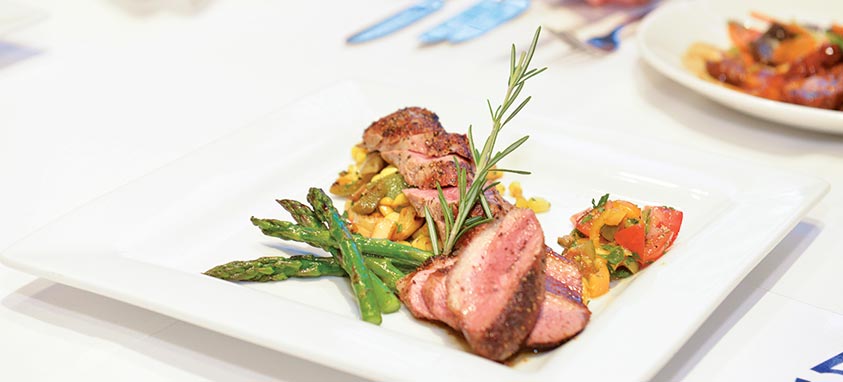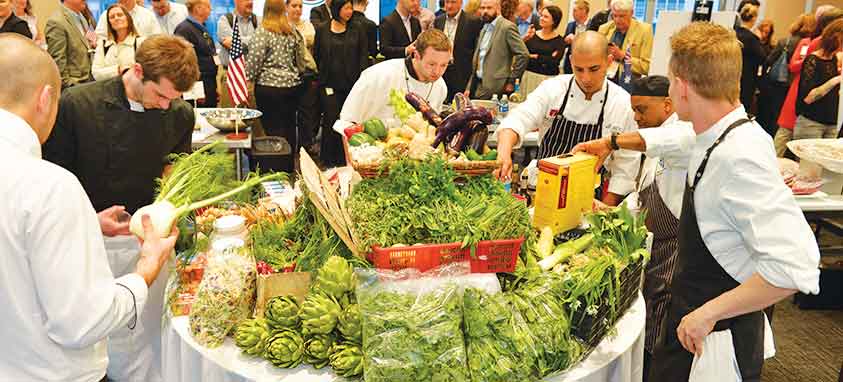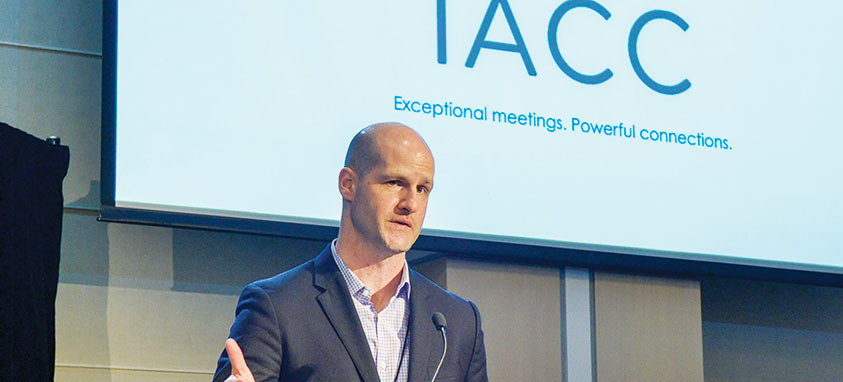Rebranding calls attention to association’s broader membership
Just as KFC no longer stands for Kentucky Fried Chicken and AT&T no longer stands for American Telephone & Telegraph, IACC no longer stands for International Association of Conference Centers. As part of a major rebranding and repositioning, IACC has a new tagline: “Exceptional Meetings. Powerful Connections.”
In April, Mark Cooper, CEO of IACC, spoke with Smart Meetings during the IACC-Americas Connect conference in New York City about the organization’s rebrand. Cooper said that the term “conference center” has become too restrictive, since IACC now has members that don’t include it in their names.
“Conference center is a fine term, but we are bigger than that now,” Cooper said. “For instance, we have eight Hiltons in the organization, as well as venues that do not provide accommodations, so I prefer the term ‘meeting-focused venues.’
“Our role remains the same—to provide a seal of quality for our 400 members. Planners, especially part-time ones, can look to IACC membership as a guarantee that they will have a successful meeting.”
The rebranding, which also includes a new logo, is only the tip of a comprehensive transformation underway at IACC. The new logo features overlapping shapes that symbolize the strength and alignment of universe connectivity. Symbols represent the four pillars that exemplify the IACC brand: exclusive meeting venue by design; at the forefront of meeting innovations; globally connected network of passionate members; and curators of exceptional meeting experiences.
“This is a monumental time in IACC’s 35-year history,” said Global President Alex Cabanas (pictured). “We are an exclusive association of the brightest minds and exceptional meeting venues in the world, and we are excited to celebrate who we are today and who we want to become with this fresh new logo and identity. This gives us a refreshing new look that reflects and projects a modern, forward thinking and innovative personality, which remains a unique characteristic of the IACC global community.”
Participation & Collaboration
According to Cooper, the IACC-Americas Connect event was representative of where IACC, and meetings in general, are going. “Everything we have done is [intended] to increase participation and collaboration, including making it possible to purchase pieces of the event to make it more affordable,” he said. “Our attendance in New York was up 20 percent, and we had the most first-timers ever. In fact, 25 percent of attendees were first-timers.”
IACC-Americas Connect used multiple meeting spaces a few blocks apart to show how different venues can be used. Walking between sessions actually facilitated attendees talking about the session as they walked from one venue to another.
“It was all about networking and collaboration,” Cooper said. “All our meals were designed so people were standing up, talking and connecting.”
The changing outlook for meetings was an ongoing theme throughout the conference. At a panel called “What Lies Behind a Great Meeting Experience,” Terry Bickham, chief learning officer for Deloitte Services, said 50 percent of the company’s employees are millennials and predicted that its leaders will be millennials within the next decade.
“We have 5–10 seconds to get their attention or else they will start looking at their phones,” Bickham said. “How can we engage them quickly? We need spaces designed to encourage networking and connectivity.”
Tessa Horovitz, a director for conference center provider Chateauform, said it’s critical for planners to be involved in a meeting’s design from the outset.
“Actually, the planner’s involvement should start even before the design,” Horovitz said. “If you don’t know the place, you can’t imagine the many ways that you can make the meeting a success.”
Focus on Food

The importance of food and beverage at meetings was made clear to attendees at IACC-Americas Connect. There was a profusion of panels highlighting cuisine, including a chefs panel; several mystery culinary experiences at top New York City restaurants with food expert Brian Freedman; a talk by a dietician about how food might affect attendee performance; and an interactive seminar on pairing food and wine.
“Food has to be exceptionally good, because that’s what people talk about,” Bickham said. “For the planner, that means asking, ‘How are attendees eating their meals? How are the meals organized so that connections and networking happen?’”

Conference center company Convene conducted extensive observations of its spaces to understand how to make its food program stand out, according to co-founder Chris Kelly.
“We realized that all of our choices must range from healthy to hearty,” Kelly said. “Also, the way food is served influences the entire flow of the conference. Everything we serve can be eaten without using a knife because we want people to mingle and walk around.”
A highlight of the conference was the extravagant Global Copper Skillet Competition, where chefs from the Americas, Europe and Australia/Asia Pacific created dishes that were judged by a panel of experts. The chefs had 15 minutes to inspect the ingredients and develop a plan. They then had 30 minutes to create a plate of food as the audience watched.
“This demonstrates where we are going,” Cooper said. “Our members will have food and other amenities and services that can compare with any other type of meeting venue—or any other dining experience of any kind.”




